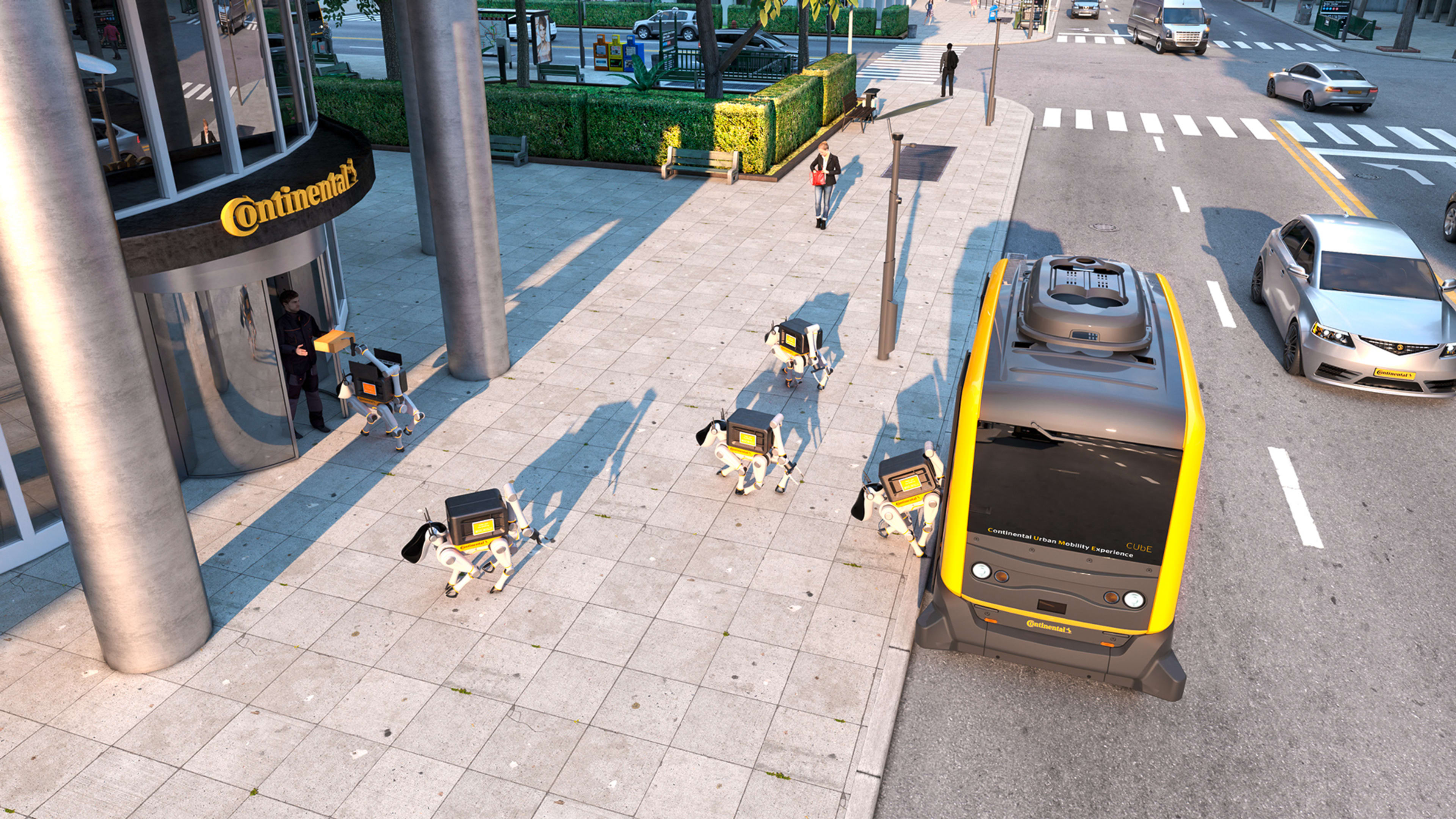CES 2019 has brought three new automated robot vehicles to an already hotly contested race to get your dinner, groceries, and packages to your home or office desk.
The goal of all these robots is to deliver for what the industry calls the “last mile,” or the distance from a local depot to a final destination. Right now, these routes are covered by humans in cars or vans. This is inefficient–it uses too much energy and worsens congestion. In some cases, for instance on campuses or inside large office complexes, it’s time-consuming and impractical.
Enter delivery robots. These small bots could, in theory, solve many of these “last mile” problems by offering an efficient, quick, and inexpensive way to get your stuff whenever you needed it. This is easier said than done; there are plenty of unanswered questions about how these bots should operate in society. They must be good citizens, respect humans, and do their job as invisibly as possible. All without getting attacked or bursting into flames first.
There’s a competition afoot to build the best delivery bot–and deploy them successfully in the real world. Here are some of the front-runners.
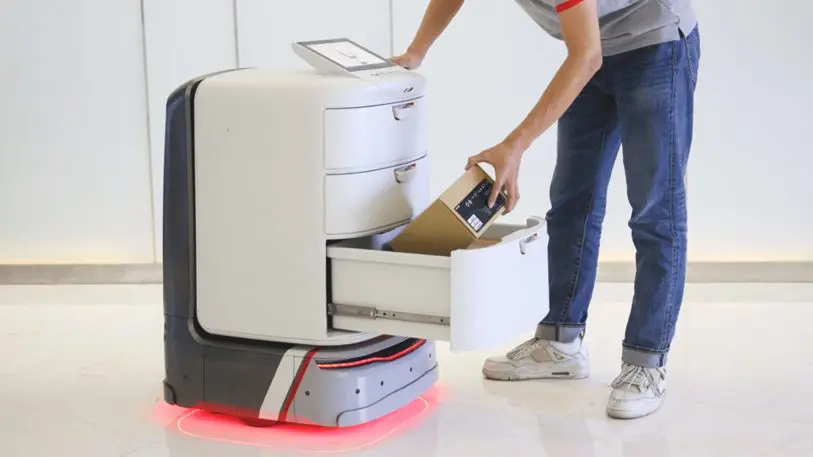
Segway Loomo Delivery
Meet the Loomo Delivery: a completely autonomous hauling robot debuted last week at CES 2019 by Segway, the personal mobility company (which seems to be doing lots of weird stuff these days).
If the Loomo looks like an office copier, well, that may be because it’s actually designed for use in offices. Segway’s aim here seems to be to own delivery within the many offices in the world that are large enough to need their own automated internal delivery systems to replace their human counterparts. The company says it’s aiming at China’s booming delivery market too, where the “last-mile delivery and takeout services market has been rapidly expanding with an annual growth rate of 30% to 50%.”
The company’s bot uses 4G or Wi-Fi to connect to the cloud to automatically set up map routes, adjust schedules, and be monitored by its human masters in real time. It can deliver a maximum weight of about 110 pounds. The technology that powers the Loomo Delivery bot is already available for preorder–but as a “personal transporter” that hearkens back to the company’s most famous product. The company says that the transporter’s success drove them to the development of Loomo Delivery.
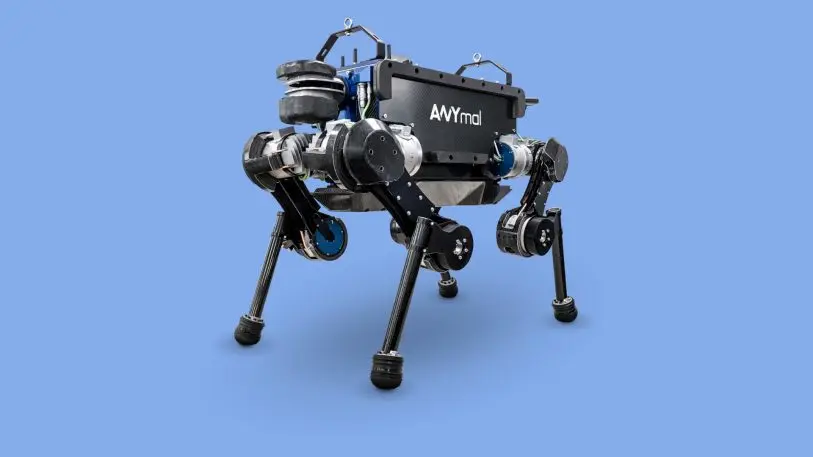
Anybotics and Continental
Anybotics and Continental also introduced a new robot delivery system at CES 2019–one that scares the hell out of me after watching Metalhead, the Black Mirror episode about the hunting robo-dog assassin.
The two companies have invented a two-part solution: First, there’s an autonomous delivery van developed by Continental. Then, inside the van, there are robotic dogs developed by Anymal. When it gets to a particular area, the delivery van doors open and the dogs emerge, carrying packages and their destinations in their little AI-powered brains. This solves the problem of the limited range of small delivery bots. By deploying them from a larger vehicle, they can easily reach their destination and get back to the mothership to ride to another destination while recharging.
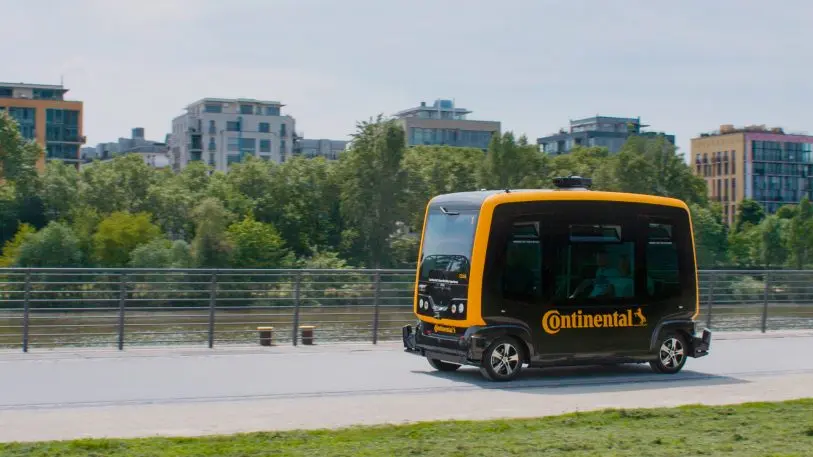

Postmates Serve
This cute robot is Serve, a tiny electric beast that can carry up to 50 pounds over a 30-mile radius. According to Postmates–the delivery company looking to replace its costly gig-economy workers with a piece of machinery that never complains–the bot is designed to make people around it feel at ease.
For starters, the LIDAR-powered bot has big humanoid eyes, like Pixar’s cute robot Wall-E. Postmates CEO Bastian Lehmann said in a press note that these eyes are not just decoration: “We have developed a specific rover-human interface so that people understand what rovers are doing at any moment.” Postmates clearly hopes that Serve’s human-centered design will help it avoid running into people or clogging up sidewalks–common issues with delivery bots.
Serve is being deployed in Los Angeles now, but Postmates is planning to extend the service to other U.S. cities in 2019.
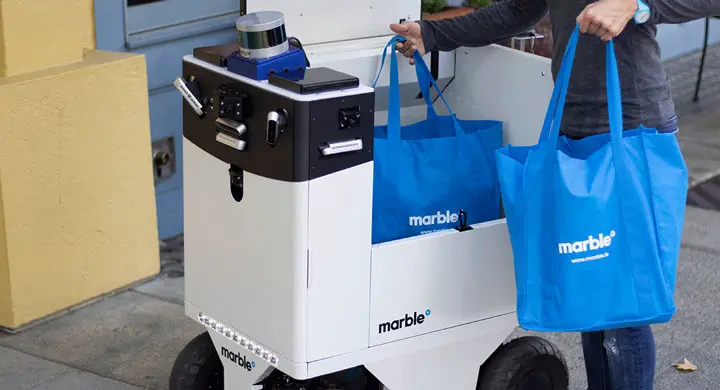
Marble
San Francisco-based Marble–a Most Innovative Company in 2018–is yet another startup that wants to save the earth with energy-efficient delivery robots that have been delivering food through a partnership with Yelp Eat24 in San Francisco since 2017.
Founded in 2015, Marble’s mission is to “help local neighborhood business to compete and stay connected to their customers.” So you can expect these robots to take your local purchases home, rather than having to carry bags yourself. The bots themselves use LIDAR combined with “state-of-the-art 3D mapping and artificial intelligence” to navigate the streets, and offer a larger capacity than most of the other robots.
San Francisco has since tightened regulations on delivery bots, but Marble announced it closed a $10 million round of funding last summer, saying that it plans to expand its technology “beyond food delivery logistics into groceries, retail, pharmacy, and more.”
Boxbot
Oakland-based Boxbot is Toyota AI Ventures’s first investment in the automated delivery space, which gives the company some of the business and auto industry cred that goes with the Toyota brand. Unfortunately, details about the venture are still slim.
Over email, Boxbot’s CEO and cofounder Austin Oehlerking commented that “unfortunately, [they] haven’t unveiled (yet) the latest version of our self-driving delivery vehicle, so there’s no photo we can share at this time.” He added that the company is “working on a problem that’s much bigger than delivering groceries.” Other than that, we know very little concrete about Boxbot’s plans–except that it was founded by engineers from Tesla and Uber, and it’s very secretive.
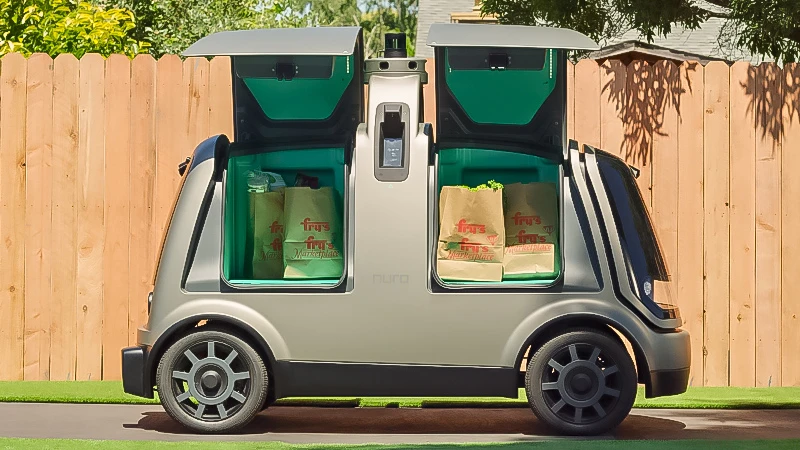
Nuro
Nuro is perhaps the largest last-mile delivery vehicle of the bunch. Created by Google engineers Jiajun Zhu and Dave Ferguson a year ago, it’s a completely automated and battery-powered delivery vehicle. According to its creators, it’s just like any other delivery van–just smaller and much safer than one driven by a human. It can be equipped with both refrigerated and heated compartments as needed, so it may be apt for the delivery of fresh groceries and hot food.
However, since it’s confined to the street, people will have to head out to the van to pick up their packages. There’s no word about when it will hit the streets in real delivery situations, but Nuro claims that it has been testing its low-speed, city-only vans since 2016.

Kiwibot
A small army of Kiwibots is already at work on the UC Berkeley campus, where one recently caught fire due to a hardware malfunction. The company’s bots are relatively tiny and specialize in personal food delivery (the perfect value proposition for college campuses).
The company, which deployed its first bot in 2017, claims they’re 65% faster than human couriers, thanks to their size, AI, and constant speed. It also says that the average delivery time is 27 minutes, with a 4.6 star (out of 5) customer service rating. They require people to go down to the street to pick up their stuff, though it’s easy to imagine this making it easier for the bots on complex college campuses.
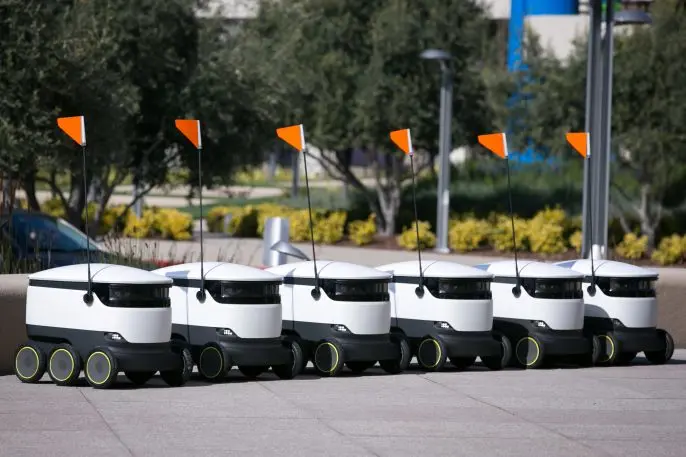
Starship Robots
Starship Robots is a company that launched in San Francisco and Estonia in 2014. When Fast Company covered the company’s small robots in 2015, the company’s business model was to cut down on the cost of human delivery with its small robots, which resemble plastic basket on wheels. In a November 2018 blog post, the company reported that “Starship’s robots are doing real deliveries seven days a week in multiple cities around the world.”
These bots can be summoned with a phone app whenever a user places an order. The robot, as you can see in the video above, will then travel to the pickup location, wait until a human places something in it, and then drive to where the drop-off location, where the other human is waiting for its cake and coffee.
It looks rather fast and easy.
Time will tell which of these startups will win out in the long run, but expect to hear more about this race over the next year. I, for one, welcome our new cake-bearing delivery overlords.
Recognize your brand’s excellence by applying to this year’s Brands That Matter Awards before the early-rate deadline, May 3.
